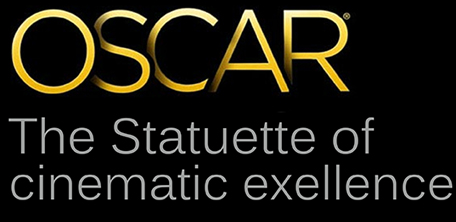
The most recognized and coveted award in the world, the gold plated Oscar Statuette has adorned the mantels of some of the greatest producers, writers, directors, actors and technicians in history since 1929. Officially named the Academy Award of Merit, the statuette is better known by its nickname, Oscar. The glittering & glamorous annual award ceremony has always been the most extravagant night in the world of cinema honouring the quintessential works in cinema for that year.

It was in early January of 1927, that the studio chief of M-G-M, Louis B Mayer, held a dinner at his beach home at Santa Monica. He invited three guests; actor Conrad Nagel, director Fred Niblo and producer Fred Beetson. Their discussion resulted in the idea of having an organized group that would benefit the film industry. The idea stimulated them for another dinner in the following week with other representatives of the motion picture industry.
On 11th January, 1927, thirty-six eminent personalities from the movie industry gathered at Ambassador Hotel in Los Angeles for a dinner. The proposal was put forward and it was accepted by everyone present. They all agreed upon a common organisation and thus the International Academy of Motion Pictures Arts and Sciences

was founded and everyone present in there became the official founders of AMPAS (‘International’ was dropped later). The official articles of incorporation were presented by mid-March of that year and Douglas Fairbanks, one of the founding members, was made the first president.
Then on 11th May, an official banquet was organised in Crystal Ballroom of the Biltmore Hotel in Los Angeles. It was attended by 300 guests and 230 of them joined the Academy by signing a check of $100. Initially when established, they had only 5 branches, viz. producers, actors, directors, writers and technicians.
By 1928, the American film fraternity alone was producing over five hundred feature-length films. Hollywood, a little suburb in California had mushroomed and firmly established itself, as the film capitol of the world. Problems began at this time necessitating an organization encompassing all filmmakers. The attacks came from Church groups who charged that the medium thrust harmful influences on unsuspecting movie goers, and parent-teacher associations criticized Hollywood’s obsession with adult themes.
The Academy then formed the Awards of Merit Committee which had seven members; Richard Barthelmess, D.W. Griffith, Henry King, Sid Grauman, Bess Meredyth, J. Stuart Blackton and Cedric Gibbons. This committee then suggested the Academy to organise an award presentation for the works of excellence in the world of cinema for each year. After a delay of one year, by July 1928, the award ceremony was confirmed and since then it has been celebrated every year as The Academy Awards.
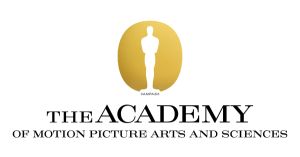
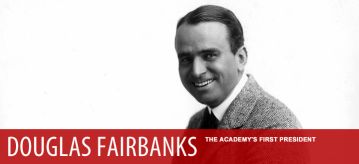
The first Academy Awards ceremony was held at a private dinner at the Hollywood Roosevelt Hotel in Los Angeles, California on 16th May, 1929. Only 270 guests had attended the function and the tickets cost $5 each. All the winners were already announced three months earlier.
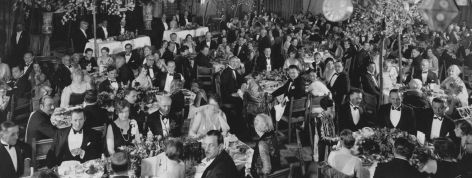
Since the winners were already made public, there were less of excitements and enthusiasm, and thus the award distribution wound up in just 15 minutes. All the recipients simply grabbed the awards without delivering any word of appreciation. There was no air of cinematic drama. The only person to deliver a thank-you speech was Darryl F. Zanuck after accepting the award for ‘The Jazz Singer’. The first Academy Award winners were announced to the press on 15th February, 1929 and the awards were presented after three months on 16th May. The first Oscar award lasted for only 15 minutes.
The 1st Oscar was awarded to only 12 categories from among the movies that were released between 1st August, 1927 and 31st July, 1928. The categories were:
Achievement by an Actor
Achievement by an Actress
Achievement in Dramatic Directing
Most Outstanding Production
Achievement in Comedy Directing
Achievement in Cinematography
Achievement in Art Directing
Achievement in Engineering Effects
Achievement in Original Story
Achievement in Writing Adaptation
Achievement in Title Writing
Most Artistic or Unique Production
The 1st Academy Awards Winners were:
Best Actor - Emil Jannings in “The Last Command” and “The Way of All Flesh”
Best Actress - Janet Gaynor in “7th Heaven”, “Street Angel” and “Sunrise”
Best Art Direction - William Cameron Menzies in "The Dove" and "Tempest"
Best Cinematography - Charles Rosher and Karl Struss for "Sunrise"
Best Directing (Comedy picture) - Lewis Milestone for "Two Arabian Knights"
Best Directing (Dramatic picture) - Frank Borzage for"7th Heaven"
Best Engineering effects - Roy Pomeroy for "Wings"
Best Outstanding picture - “Wings”
Best Unique and Artistic picture - “Sunrise”
Best Writing (Adaptation) - Benjamin Glazer for "7th Heaven"
Best Writing (Original Story) - Ben Hecht for "Underworld"
Best Writing (Title Writing) - Joseph Farnham for “Fair Co-Ed” “Laugh, Clown, Laugh” and “Telling the World”
Apart from the 12 Academy awards, two Honorary Awards were also presented. One was awarded to the legendary Charlie Chaplin for his versatility and genius in acting, writing, directing and producing “The Circus” and the other was given to Warner Brothers Production for the pioneer of a talking film, “The JazzSinger” which revolutionised the industry. Thus, 15 statuettes were awarded in the very first celebration of Academy Awards.
The first recipient of the Academy Award of Merit, Emil Jannings, did not attend the ceremony. The first Academy award winner to die is Joseph Farnham- Best writer, 1929.
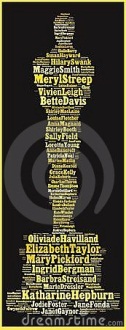
In order to present a trophy, the MGM art director Cedric Gibbons, designed a statuette described as “a knight holding a crusader’s sword, standing on a reel of film”. The film reel features five spokes which signifies the original five branches of the Academy; Actors, Directors, Writers, Technicians and Producers. Then the Academy approached the Los Angeles sculptor, George Stanley, to mould the design into a three dimensional figure. George Stanley moulded the design in clay and Sachin Smith cast him in a 92.5% tin and 7.5% copper statuette plated with gold. Thus, finally, the 13½ inches high with a weight of 8½ pounds was made in 1928 at the C.W. Shumway & Sons Foundry in Batavia, Illinois.
There are various stories behind this name. One of the most interesting stories is that the first librarian of the Academy, Margaret Herrick, said that the statuette resembled her Uncle Oscar Pierce. It is thus believed to have been nicknamed so, since then.
Another story says goes, the two times Academy award winning actress, Betty Davis, had given the name after her husband Harmon Oscar Nelson.
A third story says that the very famous entertainment columnist of that time, Sidney Skolsky, had the best claim to the fame. It is believed to have started when he tagged the name ‘Oscar’ alongwith the win of Katherine Hepburn for best actress for the year of 1934. The name was rumoured to have inspired from vaudeville- an American variety theatre- joke, “Will you have a cigar, Oscar?”
While everyone was unsure of who named the statuette Oscar, the name had already gained popularity and in the same year. Walt Disney called the statuette for the first time in public, Oscar, while receiving his Academy award for “Three Little Pigs” under Best Short category.
Thus with the popularity that it had, by 1939 the statuette was officially named Oscar. Then the function was also then stated to be known as ‘The Oscars’.
Interesting titbits.....
- Cedric Gibbons made a Mexican actor-director, named Emilio “El Indio” Fernandez, to pose nude to create the design of the statuette.
- George Stanley was paid $500 for sculpting the statuette.
There was no public broadcast of the first night of The Academy Awards. Then from the next year onwards, the Academy started to send the list of the winners to the print media every year before the event so that they could publish it immediately after the ceremony, at midnight. It continued from 1929 to 1940.
At the same time, by the second year of the Oscars, there had been a one-hour broadcast on one of the Los Angeles radio station, the KNX. This one-hour broadcast was then extended to full coverage of the entire show in 1945 during the 17th Oscars held on 15th March. The coverage was broadcasted by the American Broadcasting Company (ABC) radio to the locals and the Armed Forces Radio Station played it for the US army troops overseas.
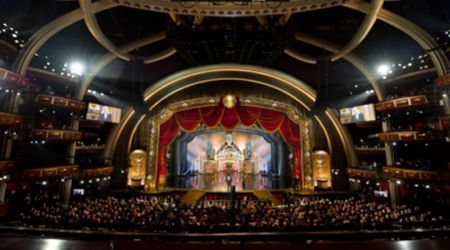
Then, the 25th Oscars was televised on the 19th March, 1953, in the NBC channel directly from the Pantages theatre in Hollywood and NBC International Theatre in New York. The year of 1966 introduced the colour broadcast of the event with the 38th Oscars. Then in the year 1969, The Oscars was broadcast worldwide, reaching the movie lovers all across in 37 countries and stopped broadcasting in radio.
Interesting titbits.....
- 42 fountains spraying water were set up in the sets of the 25th Academy Awards.
- The 25th Oscar’s Best Picture, “The Greatest Show on Earth” is considered to be among the worst films to have won an Oscar.
There were 12 categories in the first Academy Awards but today, there are 24
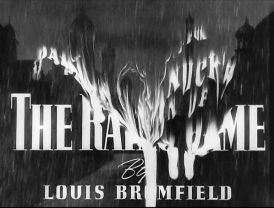
Oscar categories. The number of categories was cut down to 7 in the 2nd year, namely, actor, actress, picture, direction, writing, cinematography and art direction. But a category of Sound Recording was introduced in the 3rd year. In the year 1935, “Conrad Nervig” won the newly introduced-category of “Best Editing” for the film “Eskimo”. The same year, two
more categories were introduced, viz. Music Scoring and Song which “One night of love” and the song, “The continental” from “The Gay Divorcee” won, respectively.
The acting category was added with two more awards for best supporting actor and best supporting actress in 1937. “Walter Brennan” received the first
best supporting actor award for his role as “Swan Bostrom” in “Come and get it”. The role of “Faith Paleologus” from the movie “Anthony adverse” enacted by “Gale Sondergaard” grabbed the Oscar for the first best supporting actress.
The academy award for the year 1939 honoured the fantastic work of Special Effects for the first time for the movie “The Rains Came”. Fred Sersen and E.H. Hansen were the winners of the first Special Effects category.
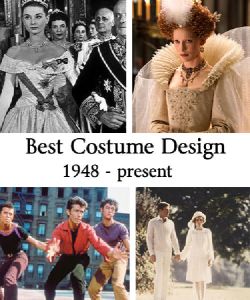
The 14th Academy Award held in the year 1941 also had a new entry in its awards category. Documentary films now got an Oscar category for the first time and “Churchill’s Island” had the win.
Post 1943, the documentary category was divided into “short subjects” and “features”.
In the year 1948, there were two movies which marked a new era of costumes in the world of cinema. Where “The Emperor Waltz” had the elegant, svelte and subtle costumes enthralling the audience, “Joan of Arc” came up with this strong, warrior and battle-field costumes engulfing the viewers inside its armours. Thus a category for “Best Costume” was introduced in 21st Academy awards which “Joan of Arc” won.
Honouring the foreign language films, Special Awards were given since 1947 but a category was introduced in the 29th Academy Awards, 1957. The inaugural Oscar was won by the Italian movie, “La Strada”.
The Oscar for the movies released in 1963 now divided the Special effects category into two; Sound effects and Special visual effects. “Walter Elliott” won the first Best Sound Effects for “It’s a Mad MadMadMad World” and “Emil KosaJr” was the first Oscar winner for Best Special Visual Effects for the film “Cleopatra”.
Then there was the year which had two movies with finest pioneers of make-ups. The robotic make-up of “Heartbeeps” and the scary, creepy and horrifying make-up of “An American Werewolf in London” were nominated in the first category for make-up.

The first animated feature film to win an Oscar was “Shrek”, in the 74th Academy Awards, when the category was introduced for the first time in 2002.
Interesting Titbits....
- “Z”, an Algerian movie was the first foreign language movie to get nominated both in “Best Picture” and “Best Foreign Language Film”.
- “Let it Be”- the song by Beatles is an Academy Award winning Original Song for the year 1971.
- The first sequel to win an Oscar for Best Picture is “The Godfather: Part II”.


